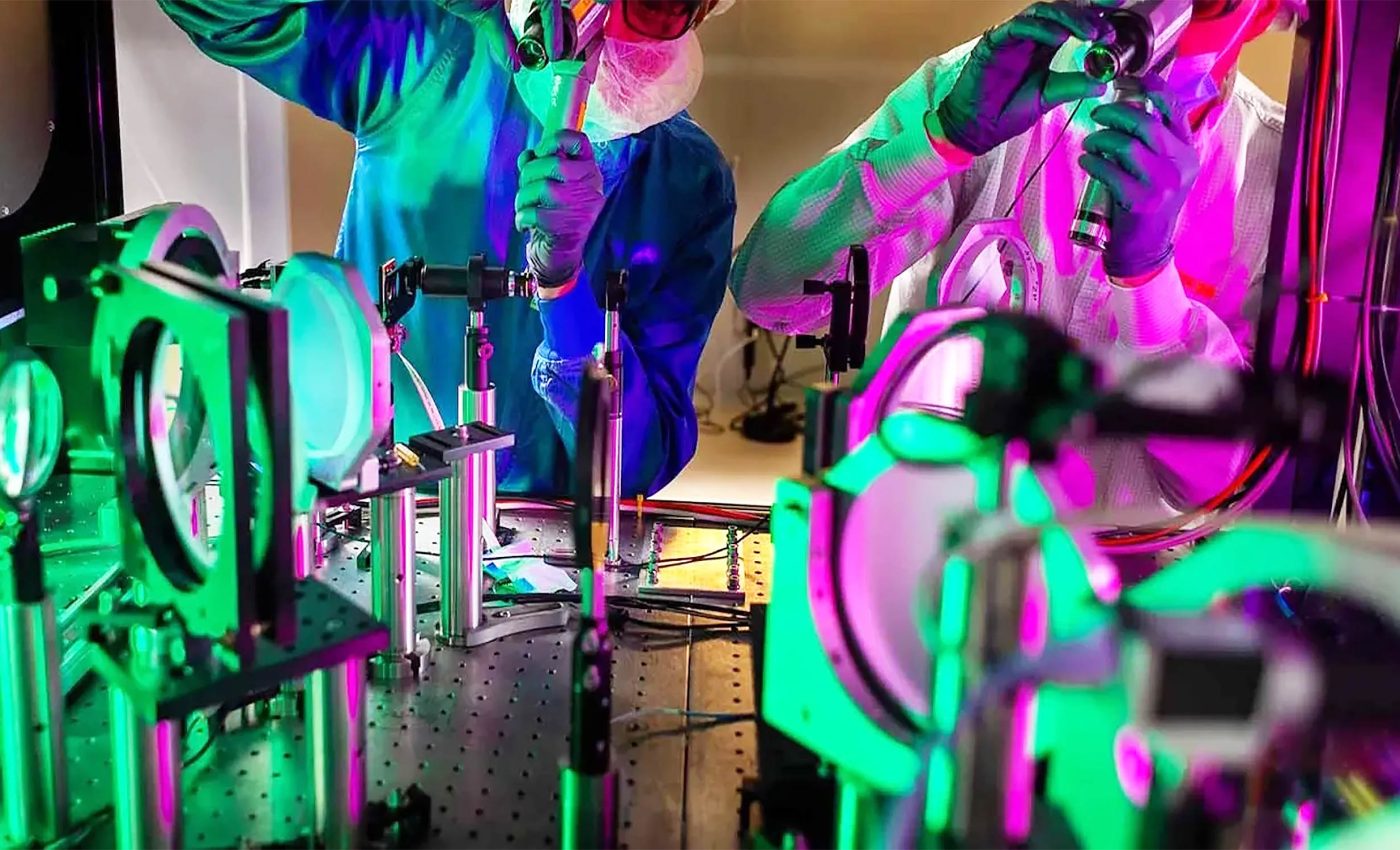
Most powerful U.S. laser just hit an astounding 2 petawatts, over 100x the global electricity output
A burst of energy more powerful than any other laser in the United States just fired from the ZEUS facility – at a jaw-dropping 2 petawatts. That’s two quadrillion watts in a single pulse. It’s a flash so brief it lasts just 25 quintillionths of a second.
At peak output, ZEUS briefly outshines the global electricity grid – by more than 100 times. But this isn’t just about raw power. It’s the beginning of a new era in ultrafast laser experiments with far-reaching possibilities.
National lab with a shared mission
Based at the University of Michigan, ZEUS – short for Zettawatt-Equivalent Ultrashort Pulse Laser System – just completed its first official experiment at this intense 2-petawatt level.
The lab is part of the Gérard Mourou Center for Ultrafast Optical Science and is funded by the U.S. National Science Foundation (NSF).
“This milestone marks the beginning of experiments that move into unexplored territory for American high field science,” said Karl Krushelnick, director of the center.
As a user facility, ZEUS offers its capabilities to researchers across the U.S. and around the world. Teams can apply to conduct experiments through an independent selection process, making it a truly collaborative space for discovery.
ZEUS laser is like no other
“One of the great things about ZEUS is it’s not just one big laser hammer, but you can split the light into multiple beams,” explained Franklin Dollar, a professor at the University of California, Irvine (UCI). Dollar’s team is running the first user experiment at full strength.
Their goal? To generate high-energy electron beams that are comparable to those from kilometer-long particle accelerators, using a device that fits in a room the size of a school gym.
Dollar’s experiment aims to hit energy levels five to ten times higher than ZEUS has ever produced before.
Laser beams accelerate electrons
The team uses two synchronized laser beams. One creates a guiding channel; the other accelerates electrons down that path.
“We aim to reach higher electron energies using two separate laser beams – one to form a guiding channel and the other to accelerate electrons through it,” said Anatoly Maksimchuk, a University of Michigan research scientist leading the experimental setup.
This process relies on plasma physics. The laser blasts into helium gas, transforming it into plasma – a soup of free electrons and ions. Electrons surf behind the laser pulse in a process known as wakefield acceleration.
By extending the gas cell and reducing its density, electrons stay in the accelerating zone longer before overtaking the pulse. This allows them to reach much higher speeds.
More ZEUS laser testing
Later this year, ZEUS plans to run its signature test. Accelerated electrons will smash into a laser pulse coming from the opposite direction.
In the electrons’ reference frame, the laser’s 3-petawatt pulse will appear a million times more powerful – hitting the “zettawatt equivalent” level that gives ZEUS its name.
“The fundamental research done at the NSF ZEUS facility has many possible applications, including better imaging methods for soft tissues and advancing the technology used to treat cancer and other diseases,” explained Vyacheslav Lukin, program director at NSF.
“Scientists using the unique capabilities of ZEUS will expand the frontiers of human knowledge in new ways and provide new opportunities for American innovation and economic growth.”
Small space, big power
The ZEUS facility packs an incredible punch in a relatively small footprint. The laser starts as an infrared pulse, stretched out by diffraction gratings to reduce its intensity.
It then passes through four stages of amplifiers. At its largest, the beam is 12 inches (30 centimeters) wide and several feet long.
As it enters a vacuum chamber, another set of gratings compresses the beam into a disk only 8 microns thick, which is ten times thinner than paper. It’s then focused down to less than a micron to achieve peak intensity.
“As a midscale-sized facility, we can operate more nimbly than large-scale facilities like particle accelerators or the National Ignition Facility,” commented John Nees, a research scientist who leads ZEUS laser construction. “This openness attracts new ideas from a broader community of scientists.”
Building ZEUS hasn’t been easy
The journey to 2 petawatts hasn’t been fast. A key challenge has been sourcing components – especially the titanium sapphire crystal at the heart of the final amplifier.
At nearly 7 inches (18 centimeters) wide, it’s one of only a few in the world.
“The crystal that we’re going to get in the summer will get us to 3 petawatts, and it took four and a half years to manufacture,” said Franko Bayer, ZEUS project manager.
Even scaling up to 1 petawatt came with issues. The diffraction gratings darkened during tests, raising alarms.
The team discovered the cause – carbon deposits from broken-down air molecules in the vacuum chamber – and developed a maintenance schedule to clean them between experiments.
The ZEUS laser is just getting started
Since opening in October 2023, ZEUS has already supported 11 experiments, and hosted 58 researchers from 22 institutions.
There’s still plenty of science to do with a 1 petawatt pulse while the team works steadily toward their 3-petawatt goal.
This facility isn’t just pushing boundaries. It’s reshaping what’s possible for high-powered laser research in the U.S. – and doing it with shared access and global collaboration at its core.
Click here to watch a video of how ZEUS works…
Details of the research were obtained from a University of Michigan press release.
—–
Like what you read? Subscribe to our newsletter for engaging articles, exclusive content, and the latest updates.
Check us out on EarthSnap, a free app brought to you by Eric Ralls and Earth.com.
—–













